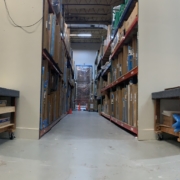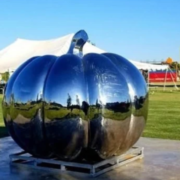Temperature Control In Art Crating
Art crating is a critical process that involves the packing and transportation of valuable artwork. Temperature control is a vital aspect of art crating that should never be overlooked. Artwork is often sensitive to changes in temperature, which can cause damage to the piece. In this blog, we will explore the importance of temperature control in art crating and the measures that can be taken to ensure the safe transportation of artwork.
Artwork is often made up of materials that are sensitive to temperature variations. For example, paintings on canvas are usually made up of natural materials such as linen or cotton, which can shrink or expand depending on the temperature and humidity. This can cause the canvas to warp or crack, leading to permanent damage to the painting. Sculptures made from materials such as clay or bronze can also be damaged by extreme temperatures, causing them to crack or warp. In addition to the risk of physical damage, temperature changes can also cause chemical reactions in some materials. For example, changes in temperature can cause the pigments in paint to oxidize, leading to discoloration or fading of the artwork. This is particularly true for paintings that use organic pigments.
The ideal temperature for art crating depends on the type of artwork being transported. In general, it is recommended that the temperature be kept between 60-75°F (15-24°C) with a relative humidity of 50%. However, some artworks may require more specific temperature and humidity conditions. For example, photographs should be kept at a lower temperature to prevent fading, while ceramics may require higher humidity levels to prevent cracking. To ensure the safe transportation of artwork, it is essential to take measures to control the temperature during the crating process.
The first step is to choose a suitable crating material that can provide insulation and protect the artwork from temperature changes. For example, a wooden crate can provide a good level of insulation, while foam padding can offer additional protection. Temperature monitoring devices can also be used to track the temperature and humidity levels during transportation. These devices can provide real-time data on the conditions inside the crate and alert the handlers if there are any significant changes in temperature or humidity. Another important step is to ensure that the artwork is acclimated to the temperature conditions before being transported. This means that the artwork should be kept in the same temperature and humidity conditions for at least 24 hours before being packed and transported. This helps to minimize the risk of damage caused by sudden temperature changes.
In conclusion, temperature control is a critical aspect of art crating that should never be overlooked. Artwork is often sensitive to temperature variations, which can cause physical damage and chemical reactions. To ensure the safe transportation of artwork, it is essential to choose a suitable crating material, use temperature monitoring devices, and acclimate the artwork to the temperature conditions before transportation. By taking these measures, artwork can be transported safely and securely, ensuring its preservation for future generations to enjoy.
About the business
While dealing with artwork, it is best to seek professional help. TyArt is an art handling company, well known and recognized for its authentic services. We offer various services like an art installation, art carting, art storage, and picture hanging. For more information, contact us at 713-869-4044, write a mail to tyart@tyart.com, or fill the contact form.




